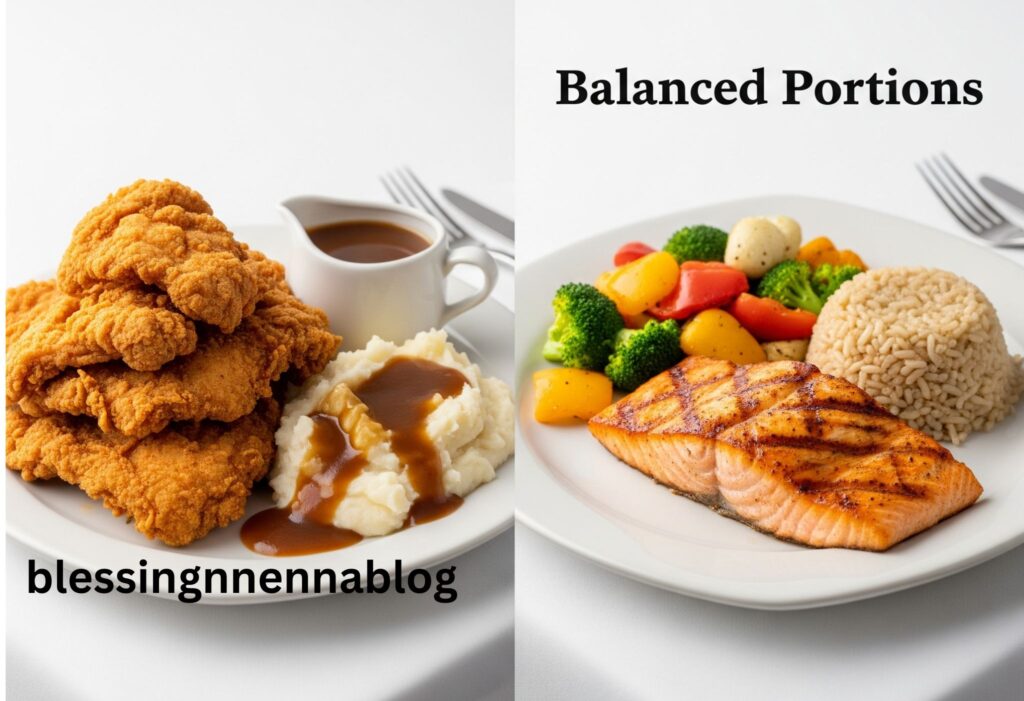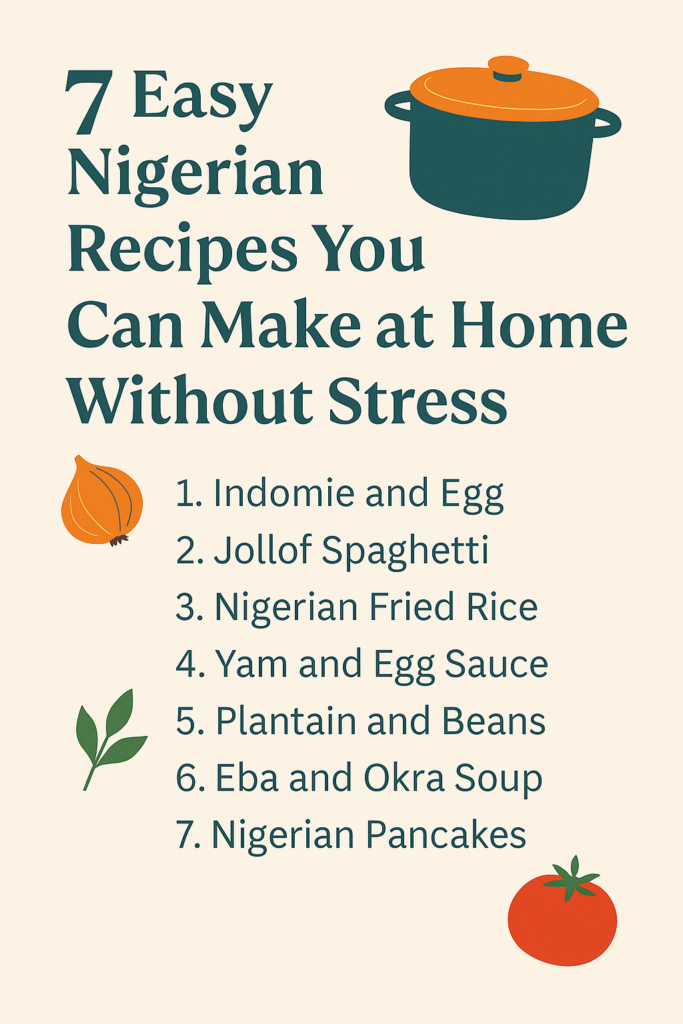
Why Portion Control Matters for Healthy Eating
portion control tips isn’t about restriction—it’s about awareness. In today’s world of super-sized meals and endless snacking, it’s easy to lose track of how much we’re actually eating. Practicing portion control helps you:
-
Maintain a healthy weight
-
Prevent overeating
-
Improve digestion
-
Stay energized throughout the day
According to the CDC, larger portion sizes can trick us into eating more than we need—often without realizing it.
Related: What Is a Balanced Diet? A Simple Guide for Beginners
Portion Control Tips: Start With Visual Cues

One of the easiest portion control tips is using your hands and plate as a guide. This takes the guesswork out of measuring and keeps things practical—especially when you’re eating out or don’t have a scale nearby.
Here’s a simple breakdown:
-
Protein: size of your palm
-
Vegetables: fill half your plate
-
Carbohydrates: size of your cupped hand
-
Fats: size of your thumb
Using a smaller plate also naturally limits portions and encourages more mindful eating.
Bonus: The Truth About Carbs: Good vs. Bad Carbohydrates – learn how to include carbs smartly in portion-controlled meals.
Portion Control Tips for Meal Timing and Frequency
Portion control isn’t just what you eat—it’s when and how often you eat too.
Try these practical strategies:
-
Eat slowly – It takes about 20 minutes for your brain to register fullness.
-
Avoid distractions – Turn off the TV and put your phone down to avoid mindless overeating.
-
Stick to regular meals – Skipping meals can lead to overeating later in the day.
By staying consistent with your meal times, you’re more likely to stay in control of your portions and avoid late-night snacking.
Related: How to Read Nutrition Labels (and What to Ignore) – understanding serving sizes can support better portion decisions.
Hydration and Portion Control: A Simple Combo
Sometimes, what we mistake for hunger is actually thirst. Drinking a glass of water before meals is a powerful (and often overlooked) portion control tip.
Water helps you feel full, aids digestion, and can prevent you from going back for seconds unnecessarily.
According to Harvard Health, staying hydrated can support metabolism and curb cravings—making it a valuable partner in portion management.
💧 Dive deeper: Why Hydration Matters: Health Benefits of Drinking Water
Watch Out for Hidden Calories and Oversized Snacks
It’s easy to lose track of portions when snacking straight from a bag or drinking sugary beverages. A “small” smoothie could have more calories than a full meal.
Here’s how to stay on track:
-
Pre-portion snacks in containers or bags
-
Read serving sizes on nutrition labels
-
Limit sugary drinks and opt for water or herbal tea
-
Be mindful of liquid calories from alcohol, lattes, and soda
Need help decoding your snacks? Check out: Top 10 Nutrient-Dense Foods You Should Eat Daily
Portion Control Tips for Home and Dining Out
Whether you’re at home or eating out, having a strategy makes all the difference:
At Home:
-
Serve from the kitchen, not the table
-
Use smaller plates and bowls
-
Store leftovers right away to prevent second servings
At Restaurants:
-
Ask for a to-go box upfront and pack half your meal before you start
-
Share dishes when portions are large
-
Skip the breadbasket unless you’re truly hungry
With practice, portion control becomes second nature—even when eating out.
Portion Control Tools That Make Life Easier
Want some help? These tools are surprisingly effective:
-
Portion control plates with sectioned spaces
-
Measuring cups and spoons
-
Digital food scales
-
Water bottles with intake trackers
You don’t have to measure every meal forever—but using these tools in the beginning builds awareness and long-term habits.
Final Thought
Portion control is one of the most sustainable habits you can build for your health. It doesn’t require counting every calorie or cutting out your favorite foods. With a few visual cues, smart swaps, and some mindfulness, you can enjoy meals more fully while naturally eating the right amount.
Remember: it’s not just about eating less—it’s about eating smart.


